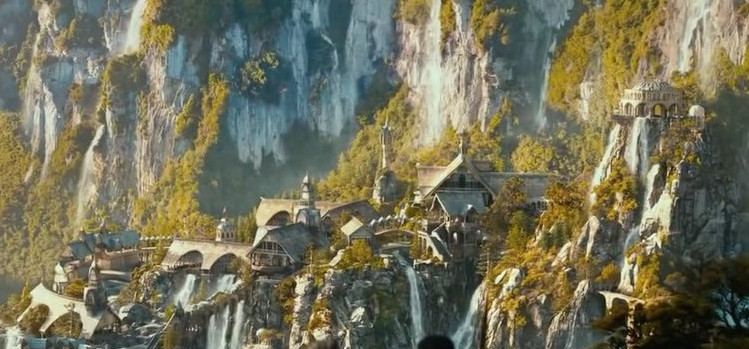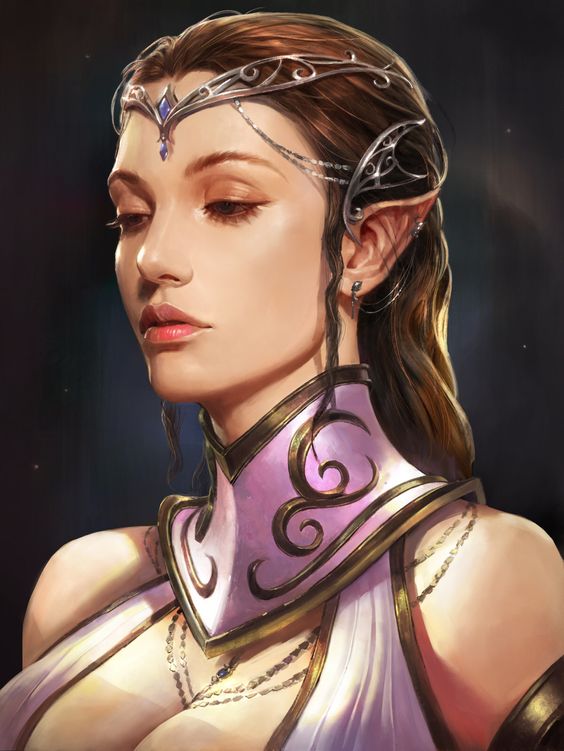Elf
Mysterious and ancient, at least until you get to know one
Created by Michael Plowden (and many others).
The plural of edhel is edheli. Additionally each subspecies can be referred to by the descriptive part of their name, such as khelek/kheleki, mori, and ramar/ramari.
Often described as the most graceful, beautiful, and eldest of all the species on Torar, the elves are much more diverse than the stereotypes paint them. Yet no matter how many short, or overweight, or clumsy, or loud-mouthed alcoholic elves there are, these ideas of them all being a human-defined vision of elegance and mystery persist. Torian elves, or edhel in their native tongue, are one of the longest-lived species in the world, second only to the
Avarta. Unlike the avarta, who haven hidden underground for eons, elves have been an active part of the world since their birth. This combination places them in the unique position of being Torar's most effective historians. They are also linked with the world in a way that has caused significant differences in elvish subspecies depending on the regions they hailed from and the events that shaped them as a people.
There are four sub-species of elf:
Olvaredhel,
Moriedhel,
Ramaredhel, and
Khelekedhel.
Basic Information
Elves reproduce sexually and experience a twelve month gestational period. It is extremely rare for more than a single offspring to be produced per pregnancy, though when this occurs the siblings are always identical twins or triplets, even if of different genders. Once an elf reaches sexual maturity between the ages of 70 and 80, they begin to experience írpuhlë, a type of 'heat' that overtakes them for between a week and a month every 10 years in a cycle, during which the elf's libido is greatly enhanced. Elves generally stop experiencing írpuhlë by the time they reach 300 years old, though continue to be able to reproduce for many centuries.
Elves mature at the same rate as humans, but are generally considered young until they reach 80 years old. Elf life expectancy is between 800 and 1000 years.
Each subspecies of elf has developed and evolved uniquely to its own habitat, which are as diverse as the elves themselves. Dark elves generally live in hot, arid environments like badlands and deserts. Snow elves predictably live in colder climates. Sky elves live in varied environments, but they all have in common difficulty in traversing them for ground-based species; archipelagos and mountain ranges are common examples of sky elf habitats. Wild elves live in flora-rich environments, whether that be jungles, forests, swamps, or some other biome with lots of plant life.
Additional Information
Elves are all adept at seeing in dim and dark conditions. They can see in dim light within 60 feet of them as if it were bright light, and in darkness as if it were dim light. They can’t discern color in darkness, only shades of gray.
Civilization and Culture
Elven children are given names at birth, but then are discarded... or at best kept as nicknames... when the elf reaches maturity and names him- or herself. Elven names tend to be poetically descriptive and reflective of the culture of the subspecies each elf belongs to. For example, a dark elven name in their moriedhel dialect might be Alsaqamarm which translates roughly into 'frost in the moonlight'. On the other hand, a snow elven name in the khelekedhel dialect might be Jadmorsius which translates to 'bloodied horse-spear'.
(DM's note: in real-world languages, dark elven names should be in Arabic, snow elven names should be in Mongolian, sky elven names should be in Latin, and wild elven names should be in Gaelic.)
Elves live so long that each one develops their own unique sense of what is beautiful. Oftentimes though older elves find beauty in exoticism, as they have been exposed to more commonplace beauty for centuries. Since elves tend to have a bit less sexual dimorphism than other species, their beauty standards often apply to both male and female alike.
Elven courtship rituals vary by subspecies, but in general they all favor 'the hunt', where one party pursues the affection of the other who leads the hunter along a merry chase. This can last months or years, drop off completely for a time, and then pick back up right where they left it years later.
Descendants of the
Naledi Tribe of mammalian servants created by the mi-go in Torar's prehistory, they still bear many of the traits their ancient ancestors were created with: lithe gracefulness, longevity, and a resistance to sleep's requirements. Over time during the
Fragment of Ice the ancient Naledi evolved into the four subspecies found during the
Fragment of Magic through various means.
Since those ancient times, elves have been adjacent to being isolationist. Finding humans tiresome at best and the other species tolerable but naive, most elves simply preferred their own kind. This grew into dense, mighty elven kingdoms across the globe. At one time elvish settlements were prevalent across the lands of Torar. However this is no longer the case, and most elvish communities are tucked away far from human civilization as they seek to retreat from the
Umbareren, the Doom of Steel, as elves know the encroachment of technology into the world.
Culturally and morally elves are ambivalent toward relations with other species, despite their isolationist political stance. It is common in fact for elves to have dalliances with other species, though much more rare for a long term relationship to form.
Scientific Name
Homo sophos
Lifespan
800 - 1000 years
Average Height
5'5" - 6'5"
Average Weight
100 - 200 lbs.



Comments